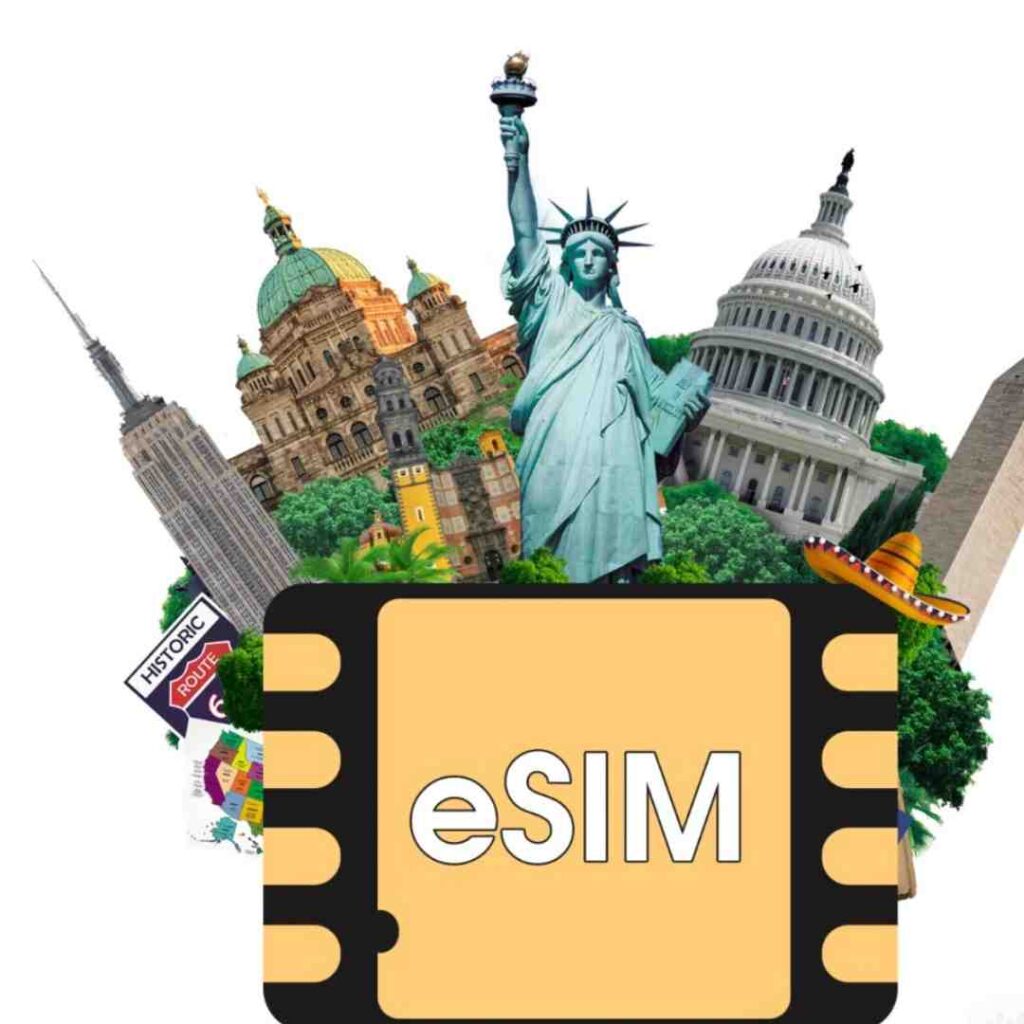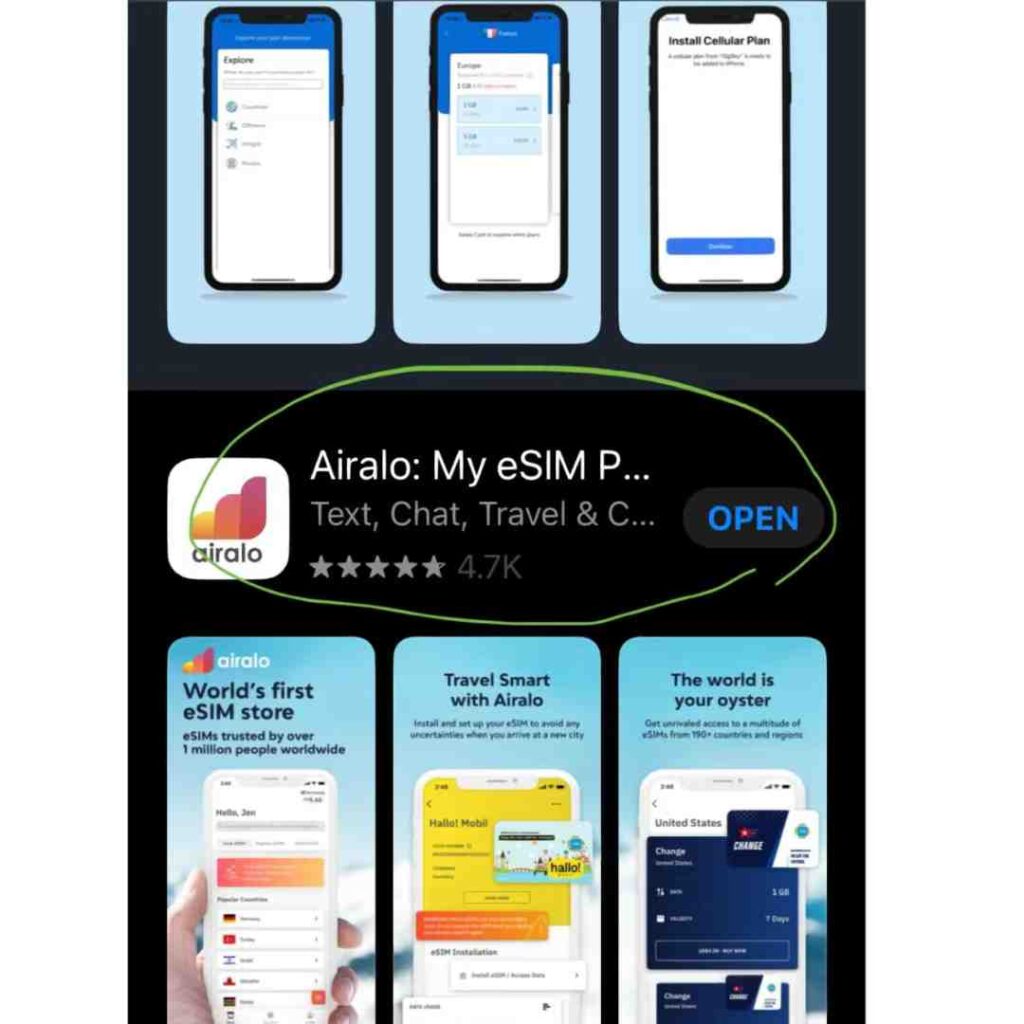Traveling to China can often leave you feeling disconnected due to strict internet policies and the need for reliable mobile data. An eSIM is a new technology replacing traditional SIM cards, making it easier to stay online internationally.

Our blog takes you through choosing the right eSIM for your trip, activating it with ease, and ensuring you’re always connected without a hitch. Get ready to explore with confidence!
Physical SIM card from a Chinese company adheres to Chinese censorship
Telecom Services and Phone Cards at Airports: Ensuring connectivity upon arrival involves navigating through telecom services at airports:
- Telecom kiosks and phone cards are available at Shanghai airport and various Chinese cities. While these can be purchased at city shops, the process may be time-consuming and require translation assistance.
- The kiosk at the PVG offers physical SIM card by two Chinese telecom unicorns: China Mobile and Chana Unicom. No eSIM card at the kiosk.
- It’s advised to check phone compatibility with Chinese network operators and be aware of potential high costs associated with traditional SIM cards.
- Users should be aware that the physical SIM card from a Chinese company adheres to Chinese censorship laws even outside China.
- Choosing non-Chinese SIMs while roaming in China or opting for a Hong Kong SIM can provide an alternative with no censorship restrictions.

There are also other physical SIM card provider such as Nihao Mobile, it is super convenient and specifically designed for expats in China.
Researching your phone’s supported bands is crucial before choosing a provider. China Mobile has extensive coverage and cost-effective plans, while Nihao Mobile is more tailored for expatriates.
Exploring China eSIM Card Options
A China eSIM is a digital SIM that allows you to access a cellular plan without the need for a physical sim card. Unlike traditional SIMs, an eSIM gets installed directly into your device and can be managed through your phone’s settings.
Travelers visiting China will find this technology particularly useful as it eliminates the hassle of finding a SIM card store upon arrival.
The China travel eSIM’s advantage lies in the normal usage of foreign apps with the purchased data. However, drawbacks include no phone number and the inability to send text messages.
Installation is user-friendly; simply follow the instructions. Be attentive to details, such as the 50GB for $50 USD China data plan, valid for 30 days and activatable only within China.
This process saves time and lets you stay connected right from touchdown at Chinese airport and don’t have to worry about roaming charges or searching for Wi-Fi spots.
Advantages and Disadvantages of Using eSIM in China
Navigating mobile connectivity in China has its unique set of challenges, but embracing an eSIM can streamline your experience significantly. Before you leap into this tech-savvy solution, it’s crucial to weigh its pros and cons as they could majorly impact your communication and travel convenience.
Benefits: immediate use, no risk of loss, dual SIM capability
- Immediate Use: As soon as you scan the eSIM QR code, your internet connection is up and running. There’s no need to visit a store or wait for a sim card manager to activate your service. Experience super helpful convenience that allows you to use Google Maps or contact customer support right from the airport.
- No Risk of Loss: Since an eSIM is digitally installed on your device, there’s zero chance of misplacing it unlike traditional SIM cards. This eliminates any worries about losing connectivity due to a lost card, ensuring your data roaming stays uninterrupted throughout your trip.
- Dual SIM Capability: eSIM compatible phones like iPhone XS or XR let you keep your home country number active while using a new eSIM for data in China. This feature enables dual functionality, providing seamless phone calls back home and local data usage simultaneously.
Drawbacks: device compatibility, limitations on multiple devices, no phone number
- Device Compatibility: Not all smartphones support eSIM technology. Before purchasing an eSIM, confirm that your device is compatible. If you own an older model, you might be out of luck, as many recent releases like the iPhone XR are equipped for eSIM use, but earlier versions are not.
- Limitations on Multiple Devices: An eSIM typically binds to a single device. This means if you carry multiple gadgets, you can’t use the same QR code to share your data plan across them all. Each gadget requires its installation guide and separate eSIM profile, which could lead to extra costs or inconvenience.
- No Phone Number: Many eSIM plans are data only and don’t provide a local phone number. This could pose problems if apps or services require a number for verification or if you need to make calls without relying on Wi-Fi or apps like WhatsApp. To stay connected via voice calls, additional planning and perhaps even a new SIM card dedicated to calls might be necessary.
Choosing eSIM providers
Selecting the best China eSIM for China involves considering several factors. You’ll want great value, ample data, and reliable network coverage to stay connected.



Each eSIM provider offers different plans tailored to meet varied traveler needs. Do review the options carefully to ensure a seamless connectivity experience in China.
Recommendations for top eSIM providers
| eSIM Name | Link | Pros | Cons |
|---|---|---|---|
| Dtac Asia and USA | Link | 10 days validity | Limited to 6 GB |
| 3 China HK Macau (15 GB) | Link | 30 days validity | Limited to 15 GB |
| 3 China HK Macau (45 GB) | Link | 365 days validity, good for frequent travelers | Limited to 45 GB |
| Airalo | Link | Cost-effective options with easy setup. Their plans include additional data purchase options which can save time and hassle for travelers who need more data on the go. | – |
| Ubigi | Link | Flexible plans, good coverage, user-friendly app | lack phone numbers |
| China Unicom Hong Kong | Link | 15-20GB for 20 days, good for heavy data usage | Only 12GB for 30-day plan, might not be enough |
| 3 Hong Kong Prepaid | Link | Offers 15GB and 30GB 30-day plans, no Great Firewall restrictions | Registration required, might be an issue for non-residents |
| RedTeaGo | – | Competitively priced | – |
| 3hk | Link | Offers China number, good for local app registrations | – |
| Holafly China eSIM | – | Eliminating the need for a VPN | Short trips, data-only |
| Nomad China eSIM | No firewall restrictions, around $35 USD for 20GB | ||
| No Limits Online | Link | Includes 5G, unblocks websites in China without VPN | – |
| AloSIM | Link | Good for Europe, $50 worth of credit for $18.97 | Credit expires 12 months after activation |
| GigSky | Link | Good coverage in Asia-Pacific, multi-country plans, versatile option for short or long-term travel needs. | – |
| Eskimo Travel | Link | Covers 80 countries, 2 years of validity | – |
| Mogo | Link | Provides US IP address | Routing path might vary, unclear specifics |
| AIS Sim2fly | – | – | – |
| T-Mobile USA $3 Plan | Link | Affordable | Limited features, might not be suitable for extensive data usage |
Other China eSIM options:
- China Unicom: Boasts wide coverage across China and offers various plans with competitive prices. Many travelers find their unlimited data plans budget-friendly while enjoying decent data speed.
- KnowRoaming: Offers unlimited global data packages that work seamlessly in China. Their service ensures that you won’t have to constantly buy additional packs, enabling better budget control.
- Truphone: Delivers reliable service with various plan options including both short-term high-speed plans and longer duration moderate use plans. Their refund policy is clear and straightforward for unused data.
- OneSimCard: Praised by international travelers, this service provides smooth connectivity despite the Great Firewall restrictions. They even offer a WhatsApp number allowing you to keep in touch without local phone numbers.
- Surfroam: Stands out with its transparency in plan details; they clearly showcase available networks and expected speeds so users know what they’re getting before purchasing.
Tips for Ordering and Activating an eSIM for China
Dive into the simplicity of staying connected in China with our guide on effortlessly ordering and activating your eSIM. Follow our straightforward advice for a hassle-free switch to smart, seamless mobile data usage while exploring the Middle Kingdom.
Things to know before ordering
Before you order an eSIM for your trip to China, there are several important factors to consider. It’s essential to ensure that your experience is hassle-free and cost-effective.
- Confirm that your device is eSIM compatible. Not all smartphones or tablets support eSIM technology, especially older models.
- Check if the eSIM offers multi country plans. This is crucial if you’re planning to visit other countries during your travels.
- Look for an eSIM that provides a cost – effective option for the amount of data you need.
- Review how well it worked seamlessly in China through customer feedback and testimonials.
- Check whether the provider doesn’t have firewall restriction or subject to Chinese government censorship.
Benefits of using eSIM over other options (local prepaid SIM cards, international prepaid SIM cards)
Choosing an eSIM can save you from the hassle of finding a store and buying a local prepaid SIM card as soon as you land in China. With an eSIM, you get instant connectivity—download your plan before your trip and connect to Wi-Fi or mobile data the moment you arrive.
You won’t waste precious travel time searching for a place to buy a SIM card, and there’s no risk of it getting lost or damaged because everything is digital.
Switching to an eSIM also offers flexibility that traditional international prepaid cards don’t. Say goodbye to swapping out SIMs every time you cross borders. An eSIM allows for seamless transitions between countries, making it perfect for multi-destination trips without incurring roaming fees that can quickly add up.
For those needing both business and personal lines, many devices compatible with eSIMs offer dual SIM capabilities so that two numbers can live on one device—a cost-effective option not always available with physical SIM cards.
Conclusion
As your adventure in China unfolds, having an eSIM simplifies staying connected. Streamline your travel with instant access to mobile data and dodge the hassle of physical SIM cards.
Embrace the ease of managing roaming costs and connectivity needs. Dive into a seamless digital experience as you explore all that China offers. Make every moment count without worrying about losing touch – that’s the power of eSIM technology at your fingertips.
FAQs
1. What is an eSIM card for mobile data in China?
An ESIM card is a digital SIM that lets your device connect to the internet and make calls without using a physical SIM card, providing convenient connectivity while in China.
2. Is using an eSIM card a cost-effective option compared to roaming?
Yes! An ESIM card can be more cost-effective than traditional roaming charges, especially if you plan on using mobile data frequently during your stay in China.
3. How do I know if my phone or device is compatible with a China eSIM Card?
To use an ESIM card, check your phone’s settings or manual to confirm it supports ESIM technology before purchasing one for your trip to China.
4. Reasons for Data or Credit Shortage
If your 50GB data plan is depleting faster than expected, it’s essential to rule out VPN-related issues. Instead, consider excessive phone calls potentially leading to surpassing limits and causing a negative balance. In such cases, checking credit status by calling 10086 is recommended.b. Another factor contributing to data shortage could be exceeding calling limits, resulting in a negative balance and subsequent data disconnection.
